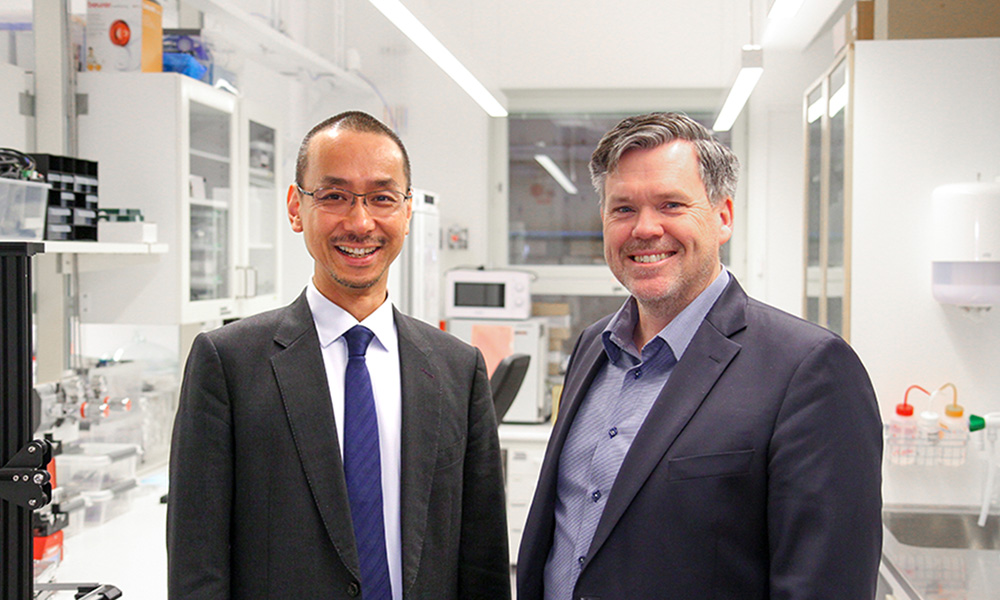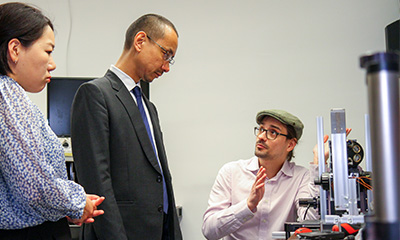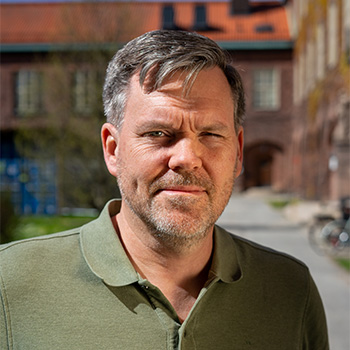Joint lab to find functional materials of the future

KTH Royal Institute of Technology is strengthening its collaboration with Japan. As part of a joint research project on nanomaterials, the University of Tokyo (UTokyo) and KTH are opening a joint lab for cutting-edge research in an interdisciplinary environment.
“The goal is to create new functional materials for, for example, beyond 5G electronics and radiative cooling for reduced energy needs – that is, sustainable technologies with great future potential,” says Professor Daniel Söderberg.
On 22 May 2025, the Department of Fibre and Polymer Technology at KTH was visited by three Japanese researchers from UTokyo. They were there to start work in their new lab at the Department of Fibre and Polymer Technology, which was established within the framework of the research project EXAR (Interdisciplinary Research of Extreme Aspect-Ratio Nanomaterials).
The project focuses on nanomaterials such as cellulose nanofibres, carbon nanotubes and spider silk - and aims to understand and control their structural, thermal, electrical and optical properties through advanced physical and chemical methods.
“The lab will be used by researchers from the University of Tokyo to conduct experiments linked to the EXAR project, including setting up instrumentation for characterising thermal conduction and dielectric properties,” says Daniel Söderberg, professor at KTH.
A dielectric material is a non-conductive material that becomes polarised when it is placed in an electric field, which is important for, for example, encapsulation in weather protection of antennas. Söderberg says there are material challenges for all types of antennas in society, from mobile phone masts to radar installations.
“The plastics and composites used in housings are often fossil-based and difficult to recycle. There is a need for bio-based and recyclable materials with the right electrical and mechanical properties.”
Led from Japan
Söderberg is a partner in the EXAR project led by Professor Junichiro Shiomi at UTokyo. Professor Junichiro Kono from Rice University in the US and Professor Jana Zaumseil from Heidelberg in Germany are also involved in the project. These researchers are among the world leaders in their respective fields, and together they are building a strong interdisciplinary research environment.

“The long-term goal is to gain new knowledge that will enable us to design functional materials for the future sustainable society. The short-term goal is to increase the department's ability to research these material properties,” Söderberg says.
The EXAR project is a consequence of KTH's investment in UTokyo as a strategic partner and the project also includes exchanges and mobility for young researchers and the establishment of joint laboratories as platforms for long-term collaboration.
“It feels very good that we have come this far in the project and that we have mobility in both directions where researchers from KTH will also spend time at the University of Tokyo,” Söderberg says.
Text: Jon Lindhe ( jlindhe@kth.se )

